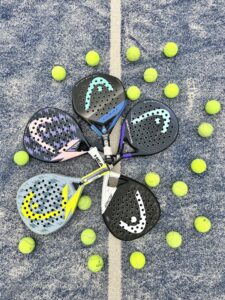The Anatomy of a Padel Court: Exploring the Layout
3 min read
The Anatomy of a Padel Court: Exploring the Layout
If you’re interested in padel, you’re probably familiar with the game’s distinctive court. While the dimensions of the court are relatively standardized, there’s a lot more to the layout of a padel court than meets the eye! In this article, we’ll explore the anatomy of a padel court in more detail.
The Overall Layout
A padel court is rectangular in shape, measuring 20 meters by 10 meters. The court is divided into three sections:
- The back court, which extends 6 meters from the back wall on each side of the court.
- The service area, which is located in front of the back court and extends from the side walls to a line marked 4 meters inside the court.
- The net area, which consists of the space between the two players on either side of the net.
The Walls
One of the most distinctive features of a padel court is the presence of walls on all four sides of the court. These walls are integral to the game, as they allow players to continue rallies that would otherwise end in a lost point. The walls of a padel court are typically made of glass, which allows spectators to watch the action from outside the court.
The Net
The net of a padel court measures 10 meters in length and 0.88 meters in height. Like the walls, the net is an essential aspect of the game, as it creates the boundary between the two players on either side of the court. Players must use a combination of power and finesse to hit shots over the net that are too difficult for their opponents to return.
The Service Boxes
The service boxes are located in the service area of the court and are marked with lines that extend 1 meter behind the front wall of the court. Players must stand inside the service boxes when serving, and they must hit the ball into the opposite service box. When serving, players are only allowed one attempt to get the ball into the proper service box. If they fail to do so, they lose the point.
The Pad in the Center of the Court
If you’ve ever looked at a padel court diagram, you may have noticed a small pad in the center of the court. This pad is typically made of foam or rubber and is designed to protect the court from damage caused by players jumping over the net. While jumping over the net is not allowed in padel, accidents can happen, and the pad helps prevent damage to the court.
Conclusion
As you can see, the layout of a padel court is more complex than it might appear at first glance. From the walls and net to the service boxes and a small pad in the center of the court, every aspect of the court is carefully designed to facilitate exciting rallies and keep players safe. Whether you’re an experienced player or a newcomer to the sport, understanding the anatomy of a padel court is essential for success on the court.







